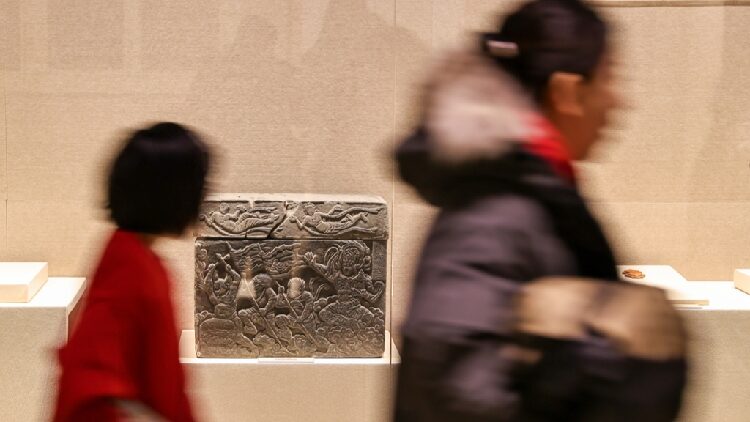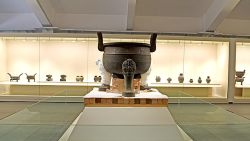An ancient stone coffer depicting the legendary tale of Ne Zha has been unveiled at the Liaoning Provincial Museum in Shenyang, captivating visitors from around the world. Unearthed from the Beita Tomb in Chaoyang, Liaoning Province, this remarkable artifact dates back nearly a thousand years to the late Liao Dynasty (907-1125).
The stone coffer is believed to be the earliest known visual representation of the myth “Ne Zha Conquers the Sea.” Ne Zha, a revered protective deity in Chinese folklore, symbolizes strength and resilience—a theme that resonates deeply with many, especially as the blockbuster film “Ne Zha 2” continues to break global box-office records.
Experts suggest that the coffer was originally placed in a pagoda in Chaoyang, serving both religious and cultural purposes. Its intricate carvings offer a rare glimpse into ancient artistry and the enduring legacy of Chinese mythology. For many visitors, witnessing such a historic piece brings the legendary stories of Ne Zha to life, bridging the gap between the past and the present.
The exhibition has sparked renewed interest in traditional Chinese tales among younger generations. “Seeing the original depiction of Ne Zha is awe-inspiring,” said one museum-goer. “It connects us to our heritage in a profound way.”
Reference(s):
cgtn.com








